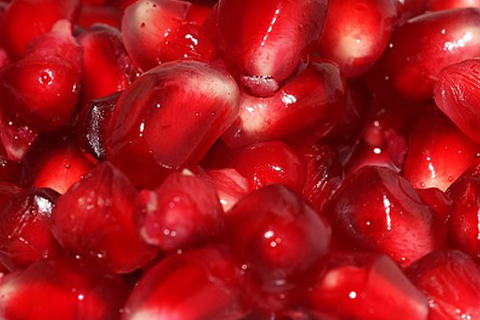
One of the healthiest fruits you can consume comes from the Punica granatum (pomegranate) tree. But how much do you really know about this amazing tree species?
Pomegranate trees produce the incredible pomegranate fruit and have been cultivated for several millennia. Relatively easy to care for, this tree, its flower, and fruit all have profound historical and cultural significance.
www.72tree.com gathered pomegranate tree information and history, care tips, and answers several frequently asked questions.
Pomegranate is a tree species native to the region of Iran to Afghanistan and Pakistan to Northern India. Today, the species is cultivated throughout the Middle East, Northern and Tropical Africa, Asia, the Mediterranean Basin, and parts of the Southwestern United States.
Tree Name – Pomegranate
Scientific Name/Species – Punica granatum
Family – Lythraceae
Genus – Punica
Nickname – Winter Jewels, Red Ruby, and Chinese Apple
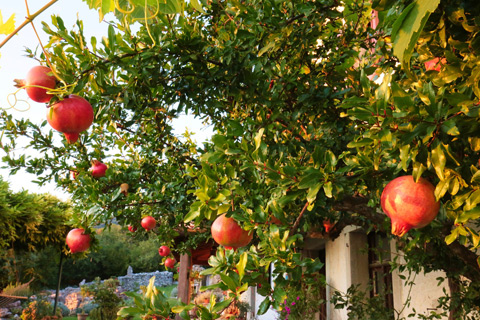
Lifespan – Can live up to 200 years or more when planted in optimal conditions.
Type – Deciduous.
Hardiness Zone(s) – from 8a to 13a
Soil Requirements – Versatile, prefers well-drained rich, fertile soil with full sun exposure.
Planting Spacing – 5 to 6ft
Watering Requirements – Regular when young or planted. Minimal thereafter.
Height – 15ft on average. Can reach 30ft under optimal conditions.
DBH – NA
Crown Span – 8 to 10ft or more at maturity.
Root Spread – Wide and shallow (10-25ft from the trunk and 2 to 3ft deep)
Uses in Landscaping – Highlight tree, border or division, and addition to orchards.
Winter/Fall Colors – Yellow before leaf-drop in the fall.
Pests – Healthy pomegranates are incredibly resilient to insect attacks but may see aphids, whiteflies, mealybugs, and thrips in the spring and summer months. Neem oil or other organic insecticides can be used to control them easily.
Disease – Keeping your pomegranate tree healthy will help it avoid or fight rot, anthracnose, and fungal wilt.
Major Disease Threat – Heart Rot
Originating from Iran to the Himalayas in northern India, Punica granatum (pomegranate) has been grown for several millennia, and was cultivated and naturalized over the extent of the Mediterranean region.
It wasn’t until 1769 that Spanish settlers introduced the first pomegranate specimen to California. Two and a half centuries later, pomegranate trees can be found throughout the US in a commercial capacity as well as in private landscapes and potted in our homes.
Armenian culture sees the pomegranate as a semi-religious icon. A symbol representing abundance, marriage, and fertility, the fruit and its juice are used with Armenian food, heritage, and wine.
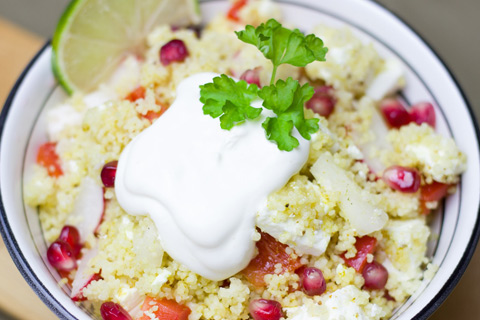
As the fruit contains numerous seeds, it is perceived to symbolize fruitfulness. Thus, fostering the tradition to eat the fruit on Rosh Hashana. Besides several mentions in the Bible, some believe the fruit has 613 seeds corresponding to the 613 commandments found in the Torah.
Pomegranate trees do not require much attention. They are very adaptable to their environment and remarkably resilient to infestation and illness when healthy.
The following tips will assist you in keeping your pomegranate tree(s) healthy and thriving.
Planting Location and Soil – Pomegranates will adapt to nearly any well-drained soil condition regardless of its pH. As long as your specimen receives full sun and is protected from temperatures below 40 degrees Fahrenheit, it should thrive.
Watering – Pomegranate roots grow within the first 2 to 3 feet of soil and do not require deep watering. Keep the soil moist for the first 8 months to 1 year, and again when the tree is bearing fruit.
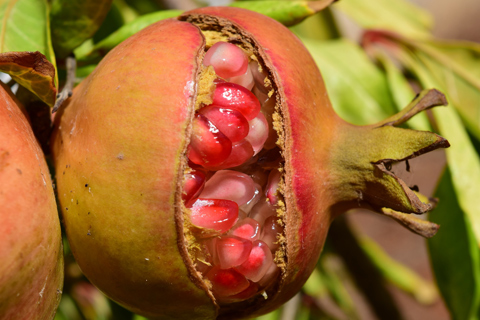
Once the tree’s roots are established, you can cut back to 2 waterings per month in the drier months. By this time though, your tree will be able to tolerate drought conditions.
When the tree is bearing fruit, you can prevent the fruit from splitting by keeping the soil moist.
Fertilizer – After planting a pomegranate tree, you do not need to fertilize it for a full year. The use of organic mulch (manure or compost) will suffice.
Thereafter, each spring, you can apply 2 ounces of nitrogen granules. Increase the dose 1 ounce for each subsequent year.
There are fertilizers specially formulated for fruit trees which may be used as well.
Pruning – Pomegranate trees produce flowers on new growth and can be pruned to remove damaged or dying branches, to shape the tree, or to remove suckers, dead wood, and unwanted growth.
The best time to prune your tree is late winter or early spring before the buds break, and when the threat of frost has subsided.
Be cautious of over-pruning, as it will reduce the amount of fruit your tree is able to produce.
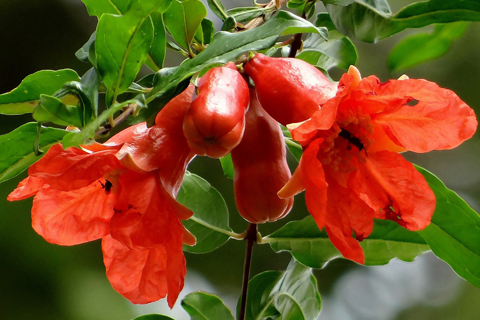
Question: Do All Pomegranates Have 613 Seeds?
Answer: No. While some will debate that all pomegranates have this number of seeds, it would be quite easy to prove the contrary.
Question: What Are Pomegranate Seeds Called?
Answer: Arils.
Question: Are Pomegranates Anti-Inflammatory?
Answer: Studies show that pomegranates have excellent anti-inflammatory properties.
Question: What Vitamins Are in Pomegranate Seeds?
Answer: Pomegranates have B vitamins including folate, vitamin C, vitamin K, and potassium.
Question: Are Pomegranates an Antioxidant?
Answer: They have high contents of polyphenols and are renowned for their antioxidant capabilities.
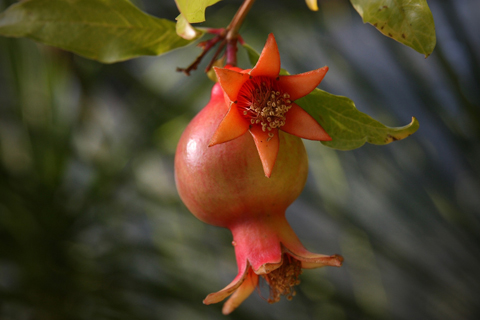
Question: How Long Does It Take for Pomegranate to Fruit?
Answer: Pomegranate trees can take up to 7 months for their fruit to fully mature. The tree itself will only bear fruit after two to three years of hearty growth.
Question: When Do Pomegranate Fruits Ripen?
Answer: Pomegranate fruit in the northern hemisphere typically ripens from September to February, and from March to May in the southern hemisphere.
Cultivated for thousands of years, the pomegranate tree and its fruit have been gracing landscapes and providing powerful antioxidants through vitamin-rich seeds for generation after generation.
In this article, you discovered the history of the pomegranate tree, how to care for them, and the answers to many common questions about the species.
Growing a pomegranate tree is easy when compared to other fruit trees, and should be a part of your landscape. With a little patience and care, you could have ripening pomegranates in under three years.
Sources:
https://www.science.gov/topicpages/t/total+pomegranate+tannin
https://www.crfg.org/pubs/ff/pomegranate.html
https://hgic.clemson.edu/factsheet/pomegranate/